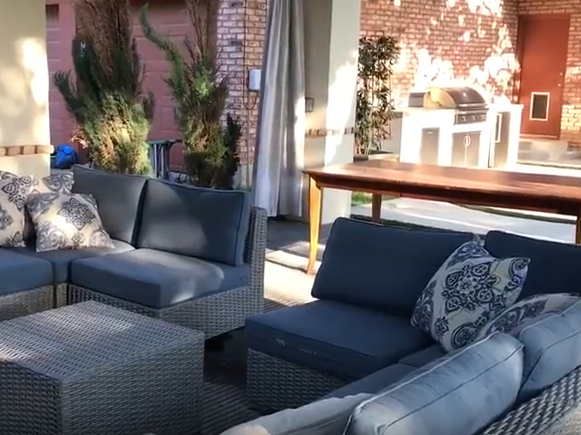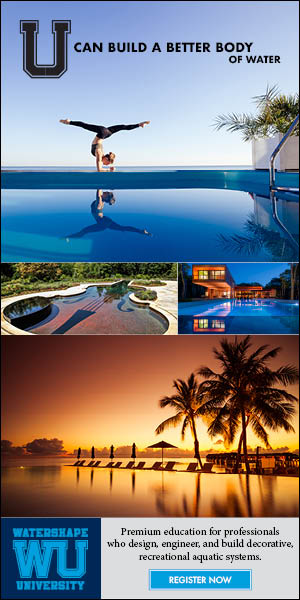Outdoor Living, Fire Features, Amenities & Lighting
Rico Rock was recently asked to provide its GFRC panels for a large waterfeature for an even grander lagoon made by the Chilean firm, Crystal Lagoons, a company that has set records around the globe for creating the largest recirculated swimming pools ever built. The result is a stunning feature on the “shore” of a Texas housing and resort development that offers luxury in a dynamic recreational setting.
...
'If there's ever been such a thing as a match made in heaven, swimming pools and landscape lighting lay a strong claim to that perfection.' That's how Mike Gambino opened his Currents column in November 2009. 'Separately, they take little-used spaces and transform them to all-day hubs of activity and sources of constant beauty. Together, however, the magic
What's involved in a good landscape-lighting project? Whole books have been written on this topic, and it's not hard to find week-long workshops devoted to showing professionals how to produce finely illuminated environments for their clients. If you're a designer or a design-oriented contractor, however, I'd suggest that you have enough of a head start that we can set you off in a good direction with this brief article and its focus on the features of a good lighting program. You already think like an artist, which is great, and know how to identify focal points and
We spend so much time these days designing and building big, complicated projects with massive complementary outdoor kitchens and shade structures that I fear some of us have lost sight of the lighter, softer possibilities open to us as watershape designers and builders. That's one of the reasons I felt compelled to
Today's swimming pools, spas and waterfeatures have moved several steps beyond their traditional, classic forms in shape, complexity, visual interest and beauty - and so have the techniques and technologies involved in giving them a warm, inviting glow when evening comes. Happily, we're far past the bad old days when the common solution to most watershape lighting tasks was placement of a blinding, 500-watt incandescent bulb in a huge, visually intrusive niche: Through years of innovation, experimentation and refinement with light-emitting diodes (LEDs), lighting is now adding splendor and wonder to the pool/spa experience in compact, unobtrusive packages - a design asset that couldn't
With increasing frequency, I've been getting involved in creating total, comprehensive backyard designs for my clients. From the pool and spa to shade structures and pool houses, from planting plans to entertainment areas and outdoor kitchens, if they want it, I'm at the ready to meet all of their needs. I love this trend, partly because it enables me to
These days, using LED lights to illuminate rectangular or kidney-shaped pools is pretty simple: You just space the fixtures out at proper intervals on a wall facing away from prime viewing spots inside the house and on deck, specify the appropriate wattage, hook them up to a suitable control system and step back to bask in the warm nighttime glow. But that sense of routine quickly disappears when
‘Those of us who are designers and builders of full-scale outdoor environments . . . face a distinct challenge: In our work for our clients, we are expected to provide the outline and details for a huge range of project elements, from watershapes and patios to plantings and walkways and more.’ That’s how Bruce Zaretsky began his On the Level column in WaterShapes’ November 2007 edition. ‘That list, at least so far as clients are concerned, also includes appropriate lighting, but that is not always something
The advent of underwater LED lighting has changed the way we look at and perceive swimming pools and spas once the sun goes down. In contrast to past days, when a single incandescent light blasted the eyes of anyone nearby, lighting is now a far subtler design feature - an intricate, integral part of a pool's aesthetic presence and the key facilitator in creating an ideal backyard ambiance once the sun goes down. But LED technology brings a learning curve with it - one that is even more of a challenge in an era when pool designs are increasingly dynamic and complex. And no matter whether you're a veteran or a
The lighting of pools is much more challenging than it once was, notes Graham Orme, mostly because their contours are so much more intricate than they were even 20 years ago. Here, he starts a new series that will guide all of us toward more 'enlightened' results.





















